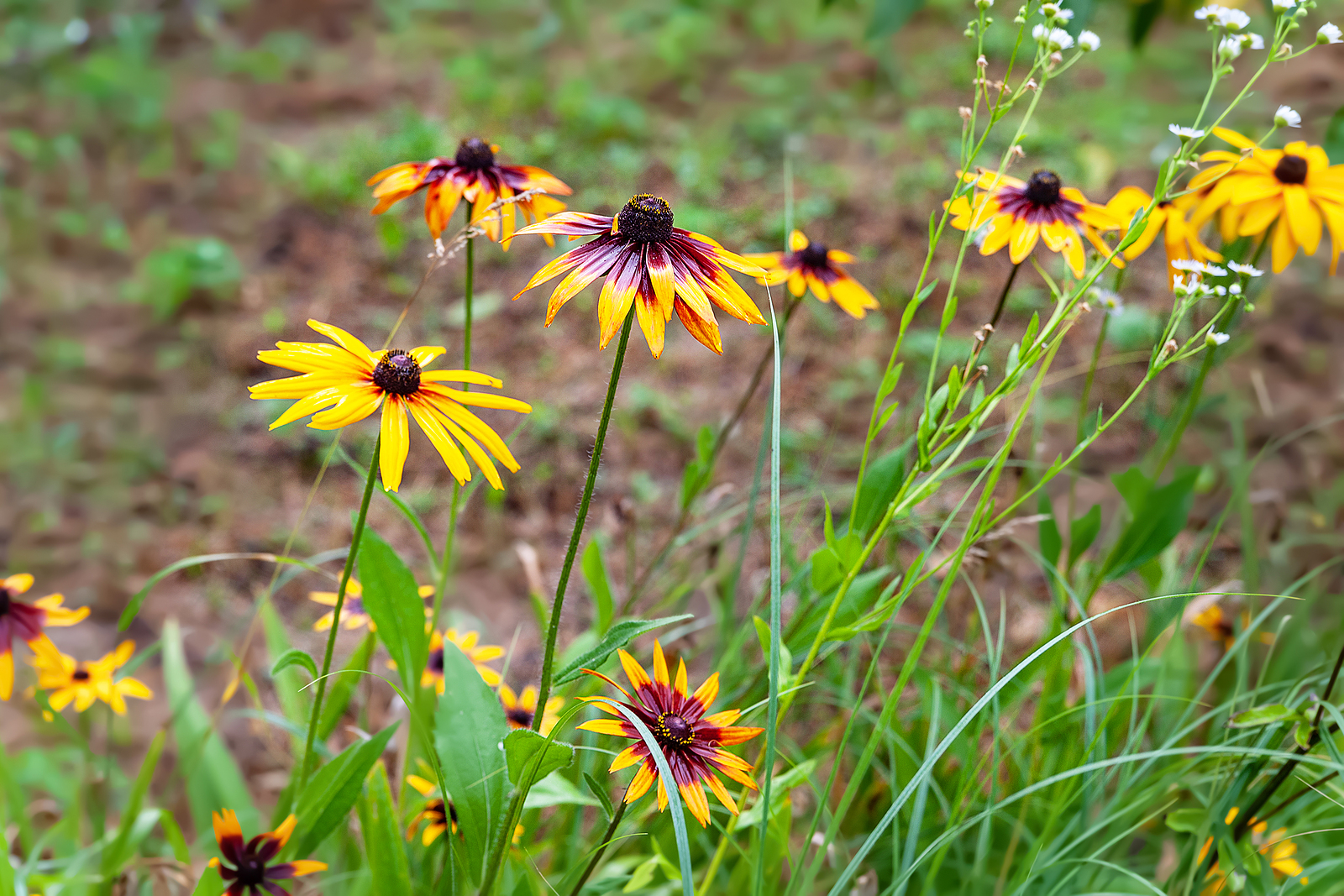Rain Gardens
Rain gardens (often referred to by the technical term bioretention cells) are shallow depressions designed to slow, capture and filtrate rain. The system is designed to capture the rain and then have it slowly drain. When more water is captured by natural systems it extends the capacity of more traditional methods for managing storm water. This can be especially helpful during large rain events. Most pollution that enters a rain garden is removed by natural processes taking place in plants and soil. Rain gardens often use native plants that can absorb large quantities of water. Native plants are more drought-resistant, accustomed to area soils and attract wildlife like butterflies and birds. This makes them an excellent landscaping choice that has the added benefit of lower maintenance costs over time. Rain gardens work best when placed at least 10 feet away from a structure and located in a low spot of a resident’s lawn, median, park edge or almost any type of green space unlikely to have foot traffic. When possible rain gardens should be placed in areas with significant sunlight, but, depending on the plants used in the rain garden, can also accommodate more shady areas.
Rain gardens are often accused of being a breeding ground for mosquitoes. Because the systems generally drain within a day, rain gardens actually serve as a mosquito death trap. While mosquitoes will lay their eggs in the gardens, they actually need more than 48 hours to grow into larvae.
Greenscaping
Millions of tons of waste are hauled away, buried or burned each day from landscaping operations. In addition, millions of gallons of water, pesticides, fuels and oils are used each day to sculpt and manicure lawns and green spaces. While there are substantial economic costs, there are also significant environmental costs that can easily be reduced or eliminated with updated landscaping methods.
Designed by the Environmental Protection Agency to help preserve natural resources and prevent waste and pollution, Greenscaping encourages governments, businesses and homeowners to make more holistic decisions regarding waste generation and disposal. The concept is divided into four elements: reduce, reuse, recycle and rebuy. Think how your city might be able to incorporate these elements while lessening your city’s impact on the land, water and air.
Reduce
Reducing the production of waste is the first and most important step toward efficient material use. When planning a new landscape design or updating a current one, avoid products that require frequent replacement or regular maintenance to reduce future waste.
Reuse
Reuse of products prolongs the useful life of these materials, thus delaying final disposal or recycling. Many items can be reused effectively without adding much time or energy.
Recycle
Recycling is the segregation, collection, storage and removal of recyclable or compostable materials from the municipal solid waste stream. Recycling minimizes waste generation by recovering and reprocessing usable products that might otherwise be disposed.
Rebuy
Rebuying means re-thinking your purchasing habits. Look for products that meet your needs but have a better environmental profile than your current product purchases. Consider bio-based, recycled content and other environmentally preferable aspects in your purchasing decisions. Recycled products, for example, are often more durable than those made with virgin materials, saving money and raw materials over time. Rebuying is key to sustaining recycling markets, and it aids in the development of technology that conserves resources and prevents waste. You can work with your managers, clients, suppliers and vendors to identify and establish specifications to purchase various environmentally preferable products.
Reducing Water use in Municipal Landscaping Projects
Irrigation for many cities is the largest single category of water use. Whether it is watering parks, athletic facilities, city green spaces or the lawn in front of city hall, there are several steps that can be used to reduce overall water consumption; here are a few suggestions:
- Avoid misting or fine spray sprinklers as the wind can take the water away from what you are trying to irrigate. Also, concrete sidewalks and streets do not grow, so be sure to target the direction of sprinklers.
- Use native plants in landscaping; these species tend to be more drought resistant and heartier.
- Adjust your sprinkler schedule periodically to account for changes in the weather.
- Space out your mowing. Cutting grass as short as possible actually causes stress and increases the water needs of the plant.
- Install a rain shut-off valve to avoid unnecessary watering.
- Water longer, but less frequently to reach and develop roots.
- The best time to water is just before sunrise. This allows for maximum absorption while reducing evaporation.
- Use mulch around landscaping to reduce the frequency of irrigation.
- Group plants together according to their water needs.
Rainscaping Iowa
Rainscaping Iowa (RI) is a statewide education initiative designed to increase awareness about the issues caused by stormwater. Administered by the Iowa Storm Water Education Program (ISWEP) in cooperation with the Iowa Department of Agriculture and Land Stewardship Urban conservation program, RI partners with numerous groups to promote the use of green infrastructure in urban watersheds. Partners include several state agencies, soil and water conservation districts and ISWEP Municipal Separate Stormwater Sewer Systems.






